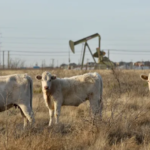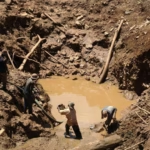Are you hunting for a perfect live streaming software for seamlessly streaming your content online? Look no further, let me introduce you to the OBS Studio (Open Broadcaster Software), which is a free, open-source software suite for video recording and live streaming.
Its flexibility and extensive features make it a go-to tool for content creators, gamers, business owners and professionals alike. We will go through the 9 steps process which will break down how to use OBS Studio for your high-quality live streams and recordings with ease.
1. Downloading and Installing OBS Studio
To get started, download OBS Studio from the official website – https://obsproject.com/download . It is available for Windows, macOS, and Linux. Follow the installation instructions for your operating system, which is basically:
- Windows: Run the installer and follow the prompts.
- macOS: Drag OBS Studio into your Applications folder.
- Linux: Follow the specific instructions for your distribution.
OBS is the most popular live streaming software and has quick and easy processes for live streaming video content.
2. Initial Setup
Upon launching OBS Studio for the first time, you’ll be prompted to run the Auto-Configuration Wizard. This tool helps optimize OBS settings based on your hardware and network capabilities.
In the Auto-Configuration Wizard, select whether you’ll primarily use OBS for streaming or recording. Choose your resolution and frame rate preferences.
OBS will test your system and apply the recommended settings.
Interface Overview:
- Scenes: Containers for your video sources.
- Sources: Various inputs like video capture devices, images, and text.
- Mixer: Audio control for each source.
- Controls: Buttons for starting/stopping streams, recording, and accessing settings.
3. Setting Up Your Scenes and Sources
Scenes and sources are the building blocks of your OBS setup. A scene is a collection of sources that form your broadcast layout.
Creating a Scene:
- Click the ‘+’ button under the “Scenes” box.
- Name your scene (e.g., “Main Scene”)
Adding Sources:
- Click the ‘+’ button under the “Sources” box.
- Choose from various source options:
- Display Capture: Capture your entire screen.
- Window Capture: Capture a specific window.
- Video Capture Device: Capture from a webcam or camera.
- Audio Input/Output Capture: Capture audio from microphones and speakers.
Organizing Sources:
- Drag and drop sources in the list to arrange their layering.
- Use the preview window to resize and position sources.
4. Configuring Audio Settings
Proper audio setup is crucial for a high-quality stream or recording.
Audio Mixer:
- Adjust the volume levels for each source.
- Mute sources if necessary.
Advanced Audio Settings:
- Click the gear icon in the Mixer to access advanced settings.
- Set sync offsets to align audio with video.
- Apply filters like noise suppression and gain.
5. Customizing Video Settings
Optimizing your video settings ensures a smooth and visually appealing broadcast.
Video Resolution:
- Go to Settings > Video.
- Set your Base (Canvas) Resolution to match your display.
- Set the Output (Scaled) Resolution for the desired stream/recording quality.
Frame Rate:
- Choose a frame rate (e.g., 30 or 60 FPS) based on your content and hardware capabilities.
Bitrate:
- Go to Settings > Output.
- Set your bitrate for streaming and recording. Higher bitrates improve quality but require more bandwidth.
6. Recording and Streaming
Now that your setup is ready, it’s time to start recording or streaming.
Recording:
- Go to Settings > Output > Recording.
- Choose the recording format (e.g., MP4, MKV).
- Set the recording path where files will be saved.
- Click “Start Recording” in the Controls panel.
Streaming:
- Go to Settings > Stream.
- Select your streaming service (e.g., Twitch, YouTube).
- Enter your stream key (found in your streaming platform’s dashboard).
- Click “Start Streaming” in the Controls panel.
7. Adding Overlays and Alerts
Enhance your stream with custom overlays and alerts.
Overlays:
- Add image or media sources to your scene.
- Position and resize them in the preview window.
Alerts:
- Use third-party services like Streamlabs or Streamelements.
- Integrate alert widgets by adding Browser sources in OBS.
8. Managing Performance and Troubleshooting
Maintain optimal performance and troubleshoot common issues to ensure a smooth broadcast.
Performance Tips:
- Close unnecessary applications to free up system resources.
- Lower your output resolution or bitrate if experiencing lag.
Troubleshooting:
- Check OBS logs for error messages (Help > Log Files).
- Ensure all drivers (e.g., graphics card) are up to date.
9. Advanced Features and Plugins
Explore advanced features and plugins to extend OBS Studio’s functionality.
Virtual Camera:
- Use OBS as a webcam in other applications.
- Go to Tools > VirtualCam.
NDI Integration:
- Use NDI plugins to capture video from other devices on your network.
- Download and install the NDI plugin for OBS.
Scripts and Macros:
- Automate tasks with Lua or Python scripts.
- Go to Tools > Scripts to manage and run scripts.
10. Community and Support
Leverage the OBS community for additional support and resources. Join the OBS Forums or Discord server for help. Access the OBS Wiki for detailed guides, documentations and tutorials. Watch tutorial videos on YouTube to learn more advanced techniques.
Conclusion
OBS Studio is a powerful tool that can elevate your streaming and recording capabilities. By following this guide, you can set up and customize OBS to fit your needs, ensuring high-quality broadcasts every time. Whether you’re a beginner or an experienced content creator, OBS Studio offers the flexibility and features to help you succeed.














